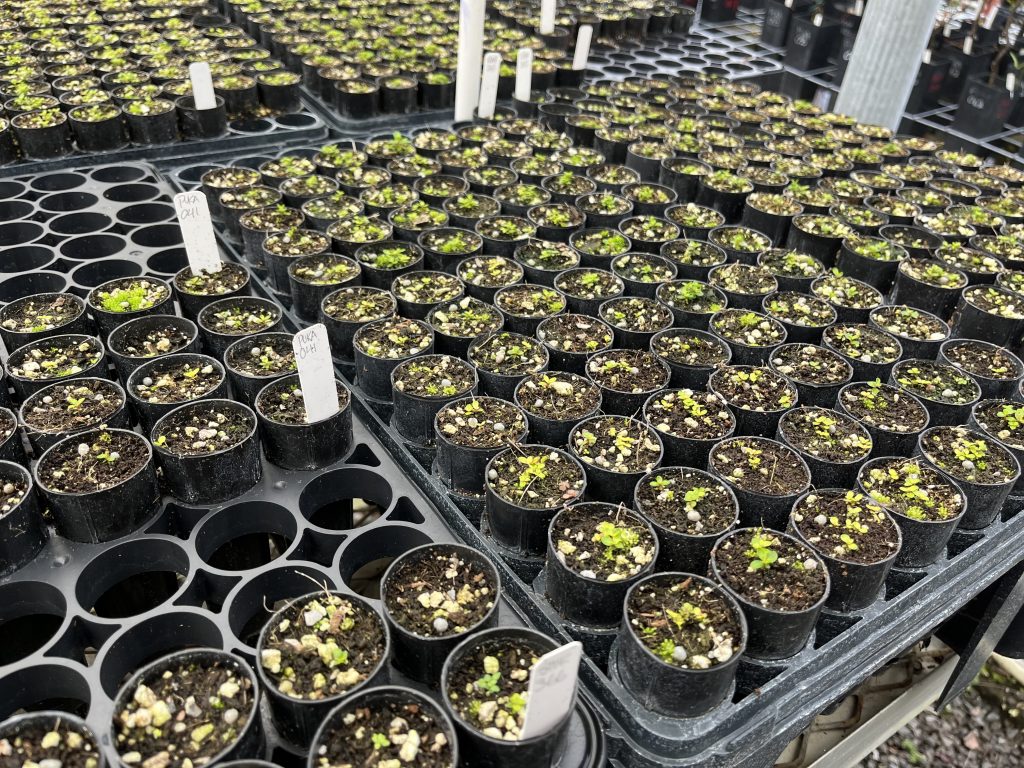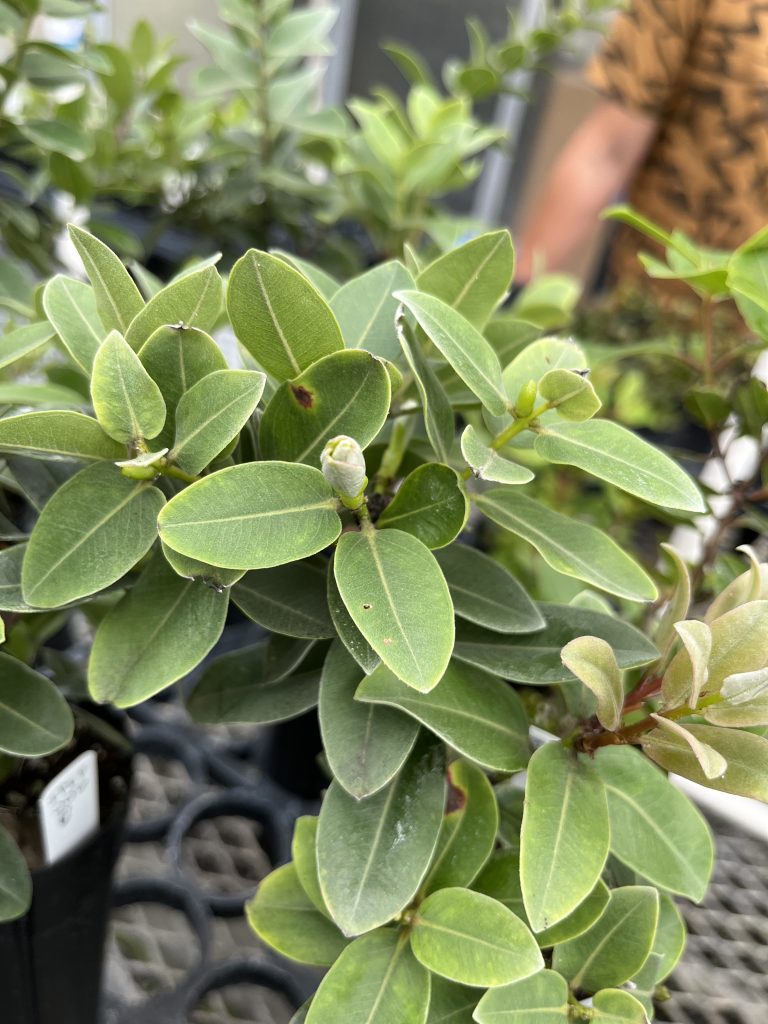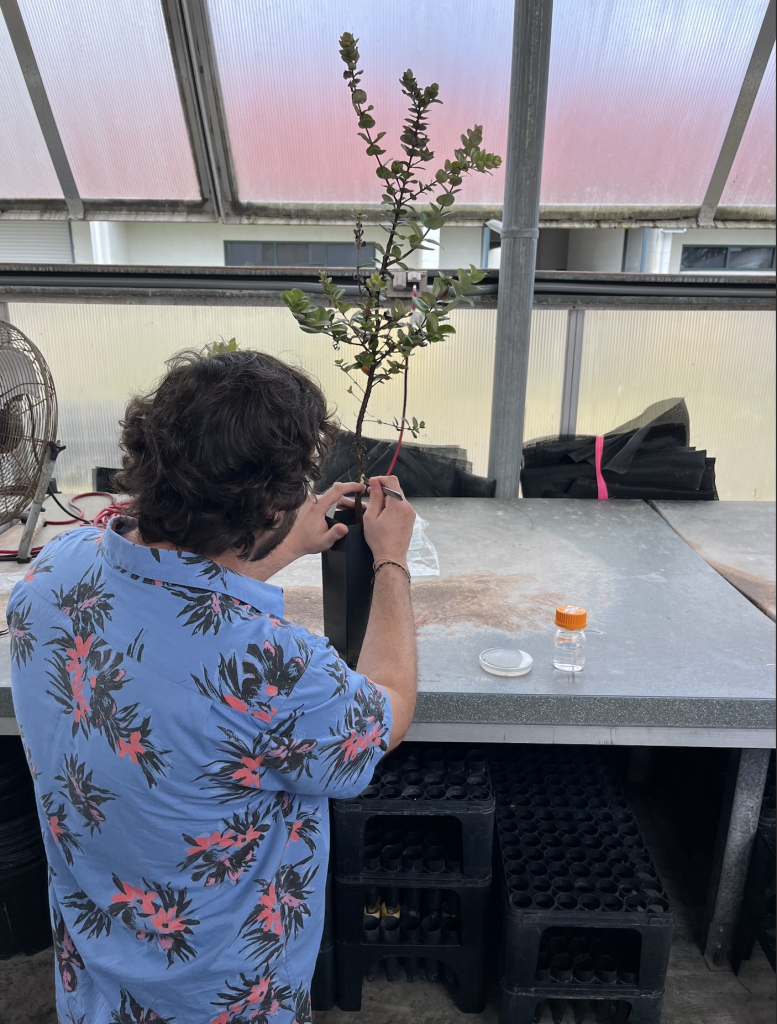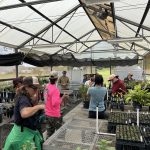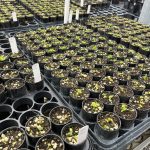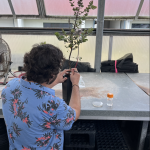MISC: ʻŌhiʻa seeds from resilient trees may hold the key to stopping Rapid ʻŌhiʻa Death
By Maui Invasive Species Committee staff
Rapid ʻŌhiʻa Death (ROD) was detected in three landscaped ʻōhiʻa trees in Central Maui in February. ROD is a fungal disease that can kill a healthy ʻōhiʻa tree. First identified in Puna in 2014, the disease has since devastated thousands of acres of forest on Hawaiʻi Island, wiping out over a million trees.
While ROD has not yet impacted Maui’s 80,000 acres of ʻōhiʻa forest, a local epidemic could have far-reaching impacts, affecting everything from native birds to the island’s water supply. However, researchers with the ʻŌhiʻa Disease Resistance Program (ODRP) on Hawaiʻi Island are conducting studies to identify ʻōhiʻa with genetic resistance to ROD. Early results are hopeful for ʻōhiʻa statewide.
As ROD spread through Hawaiʻi Island forests, researchers made a key observation: some
ʻōhiʻa in high-mortality areas remained healthy, seemingly unaffected by the disease.
Did they randomly escape infection? Or do they have some level of resistance to ROD? To explore these questions, researchers established ODRP in 2018. A collaboration between federal, state, nonprofit, and academic partners, ODRP identifies and propagates ʻōhiʻa with genetic resistance to ROD.
ODRP is focused on Metrosideros polymorpha—the most widespread of Hawaiʻi’s five ʻōhiʻa species. M. polymorpha is among the most genetically diverse trees in the world, allowing it to thrive in a range of environments and fill various ecological niches. Some varieties of M. polymorpha may even be resistant to disease.
“There is so much diversity in ʻōhiʻa, there has to be resistance,” said Ryan Belcher, Operations Specialist at ODRP. “We’re just trying to give ʻōhiʻa the best chance we can.”
ODRP’s big-picture goal is to make ROD-resistant ʻōhiʻan available for restoration and landscaping across the state. However, getting there is a long, meticulous process. The program initially concentrated on screening survivor trees in hard-hit areas of Hawaiʻi Island.
Over time, the team expanded their efforts to include testing seed families from ʻōhiʻa populations across the state, casting a wider net in the search for resistance.
Horticulturalists collect seeds from the wild, germinate them, and grow them at the ODRP nursery on Hawaiʻi Island. Once the seedlings reach 6mm in stem diameter (about as thick as a pencil), Belcher and his team inoculate them with ROD. It can take two years for ʻōhiʻa to grow to 6mm from seed. However, the early results are encouraging.
Belcher and the ODRP team are seeing a spectrum of responses from ROD-inoculated seedlings. Some trees wilt and die, while others show little to no signs of infection. The varied responses indicate that the inoculation process is working and shows that some genotypes may truly be resistant to the disease.
“We are seeing signs in the greenhouse that we are killing stuff, so it shows that our infection rate is working,” says Belcher. “We’re also seeing ʻōhiʻa that survive three to five years after inoculation. So it’s very hopeful.” Belcher says they are playing the long game, and confidence will build after repeated trials.
“We’re constantly germinating seed families for trials two to three years down the road,” he said. With the help of staff, Belcher runs up to three trials per year, with 300-400 seedlings
screened per trial. “Once we’re able to verify that all of our results are consistent with each trial and we can replicate everything, then we’ll move to more of a production phase. It’s a slow process, but we want to make sure we get it right before we jump the gun.”
There are two strains of ROD: Ceratocystis huliohia and Ceratocystis lukuohia. C. huliohia, the
less virulent strain, has been identified several times on Maui. Identifying ROD-resistant ʻōhiʻa could give Maui conservationists an advantage if and when the more transmissible strain arrives.
Still, it could be years and dozens more trials before ODRP can confidently say they’ve found resistance. Despite the long road ahead, the team at ODRP remains hopeful. “We’re here, we’re fighting, and there is hope.” said Belcher.
The ʻŌhiʻa Disease Resistance Program relies heavily on grant funding and donations. To learn
more about the project and support the research, visit akakaforests.org. You can also help by
learning the symptoms of Rapid ʻŌhiʻa Death (sudden browning, wilting, or dieback) and
reporting any signs to Maui Invasive Species Committee, Hawai’i Department of Agriculture, or
643PEST.org.
Editor’s note: This is part of a monthly series of articles created by the Maui Invasive Species Committee to highlight issues surrounding invasive species in the Maui community.





